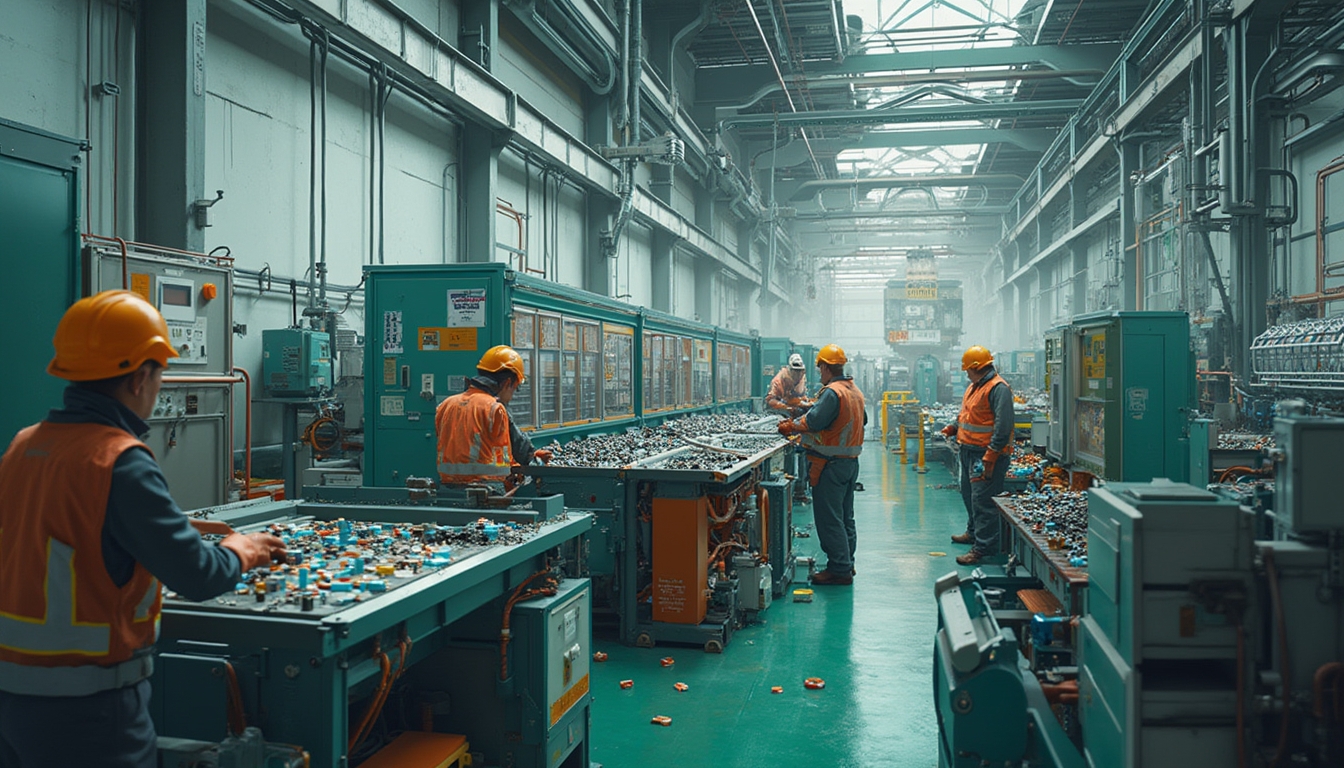Glencore delivers despite lower coal prices in a challenging market environment where diversification and operational efficiency have become paramount for success. The company has managed to uphold strong performance even as reduced coal prices impacted revenue streams, demonstrating that a well‐balanced portfolio can help offset adverse market trends. This outcome comes on the back of significant strategic moves and robust operational discipline that have allowed the company to navigate uncertainties while continuing to invest in growth areas.
How Did Glencore Maintain Strong Performance?
Glencore’s ability to perform in turbulent commodities markets is underpinned by various factors. The company achieved a 4% increase in copper equivalent production volumes, adhering well to its original guidance ranges. Such growth has been driven by careful integration of acquired assets—most notably EVR’s steelmaking coal volumes after the July 2024 acquisition. These operational strategies showcase how Glencore delivers despite lower coal prices, ensuring a multi-commodity revenue base that helps hedge against fluctuations in any single sector.
Additionally, the company’s focus on innovation has seen it exploring 3d geological modelling techniques to enhance its exploration efficiency. This technical progression is part of Glencore’s broader strategy to adopt modern methods that boost productivity while maintaining safe operations.
- Copper production increased by 4%.
- Production levels continued within forecasted guidance.
- Seamless integration of EVR’s assets bolstered overall production capacity.
These advancements, combined with a keen eye on market trends, reiterate the company’s commitment to operational excellence and innovation, which resonates with how Glencore delivers despite lower coal prices by maintaining a resilient business model.
What Impact Did Lower Coal Prices Have on Financial Results?
Even as coal prices dipped, Glencore’s diverse portfolio helped stabilise its financial performance. A few key financial insights include:
- Adjusted EBITDA fell by 16% year-over-year, landing at $14.4 billion.
- Funds from operations saw an 11% increase, reaching $10.5 billion.
- Net debt increased by $6.3 billion—from $4.9 billion in 2023 to $11.2 billion.
Despite these challenges, the robust cash flow and a balanced mix of commodities demonstrate that Glencore delivers despite lower coal prices. The company attributes its relatively stable performance to a well-diversified strategy that includes investments in areas beyond the often volatile coal market. For additional context on market headwinds, consider the insights provided in this coal prices slump report from Euronews.
Gary Nagle, the CEO, credited the company’s financial stability to the successful integration of multiple business segments. He stated, "Our diversified business model allowed us to maintain financial stability despite energy price volatility." This comment underlines the fact that the company’s careful resource allocation and strategic planning enable it to overcome headwinds and continue progressing, even when market conditions are tough.
Strategic Moves in a Challenging Market
Glencore has made several strategic moves that have reinforced its position in the industry, even in the face of lower coal prices. Notably, the company generated $1.8 billion in net working capital inflows. These funds were pivotal for financing significant investments, including a $6.7 billion net capital expenditure and a $7 billion EVR acquisition. Maintaining efficiency in liquidity management underlines how Glencore delivers despite lower coal prices.
The company’s commitment to operational excellence is further illustrated by its efforts in decarbonisation strategies, which are pivotal in aligning with environmental standards and ensuring long-term sustainability. Moreover, the introduction of strategic investments in human capital has reinforced the company’s capability to innovate and tackle emerging challenges while reinforcing internal competencies.
These strategic moves have not only helped stabilise cash flows but also provide a solid base for future growth. Glencore’s proactive stance in risk management and strategic capital allocation is a testament to its ability to deliver robust performance even when traditional revenue streams like coal face downturns.
Shareholder Returns and Capital Allocation
As part of its comprehensive strategy to mitigate market risks, Glencore has maintained a clear focus on returning value to its shareholders. The company announced total shareholder returns of $2.2 billion, equating to $0.182 per share. This figure encompasses a base cash distribution of $0.10 per share, amounting to approximately $1.2 billion, supplemented by a significant $1 billion top-up buyback.
In addition to these returns, the disciplined capital allocation framework is designed to strike a balance between funding new investments and rewarding shareholders. Further details on such efforts can be found in a lower earnings report from Reuters, which provides insights into how capital is managed in a volatile market.
This balanced approach not only bolsters investor confidence but also highlights Glencore’s ability to deliver despite lower coal prices by ensuring sufficient liquidity and investment in growth projects, which, in turn, drive long-term shareholder value.
What Are the Future Growth Projections?
Looking ahead, Glencore is forecasting steady growth in production and market expansion. The company projects a 4% compound annual growth rate (CAGR) for copper equivalent production through 2028. This projection is bolstered by the increasing global demand for copper, with additional support provided by insights into the global copper market.
The future growth strategy will involve:
- Continued diversification into higher-demand minerals.
- The introduction of innovative technological advancements.
- Increasing focus on sustainability through initiatives such as platinum's crucial role in green energy technologies.
Gary Nagle has consistently maintained that operational efficiency and targeted strategic investments are pivotal to sustaining long-term growth. He emphasised, "Operational efficiency and strategic investments will drive long-term value," clearly outlining the roadmap for future success. By focusing on emerging trends and sustainable practices, Glencore aims to not only deliver despite lower coal prices but also carve out a leadership role in future commodity markets.
In-Depth Analysis and FAQs
A series of frequently asked questions further underscore the depth of analysis behind Glencore’s resilient performance:
-
How did the company manage to stay profitable in the face of lower coal prices?
- Glencore managed operational cost controls and diversified its commodity portfolio. This strategy allowed it to mitigate the negative effects of lower coal prices by leveraging growth in copper production and other areas.
-
What drove the increase in copper equivalent volumes?
- The disciplined production process, coupled with the successful acquisition and integration of EVR’s steelmaking coal assets, led to a 4% growth in copper equivalent volumes.
-
How does the company balance operational growth with environmental responsibilities?
- Glencore integrates sustainable practices such as decarbonisation strategies and actively invests in human capital to ensure that its growth trajectory is both sustainable and socially responsible.
- What are the strategic measures implemented to manage market challenges?
- Key measures include strategic capital allocation, robust liquidity management, and a focus on diversified commodity production which collectively contribute to why Glencore delivers despite lower coal prices.
These FAQs summarise the holistic approach taken by Glencore in managing a complex portfolio of assets while reinforcing its market leadership. The use of bullet points and detailed analysis helps distil the core operational and strategic messages, ensuring that both investors and industry analysts can appreciate the nuanced factors driving performance.
Conclusion
Glencore’s performance in the face of lower coal prices is a case study in strategic diversification and operational efficiency. Through meticulous capital allocation, robust integration strategies, and a clear focus on innovation and technology, the company has successfully pivoted away from over-reliance on any one commodity. Whether through leveraging advanced 3d geological modelling, exploring sustainable decarbonisation strategies, or delving into the dynamics of the global copper market, Glencore continues to underscore its capability to deliver strong performance despite lower coal prices.
With robust shareholder returns, thoughtful investments in both technology and human capital, and a clear strategic vision for the future, Glencore stands as a resilient entity in the global commodities market. As market conditions evolve, its continued focus on diversification and sustainability will be critical to maintaining its competitive edge and ensuring steady growth over the coming years.
Want to Discover Market-Moving Investment Opportunities?
Discovery Alert's AI-powered service provides real-time notifications on significant ASX mineral discoveries, simplifying complex market data and helping investors—from newcomers to seasoned traders—capitalize on emerging investment opportunities with actionable insights and a free 30-day trial.







